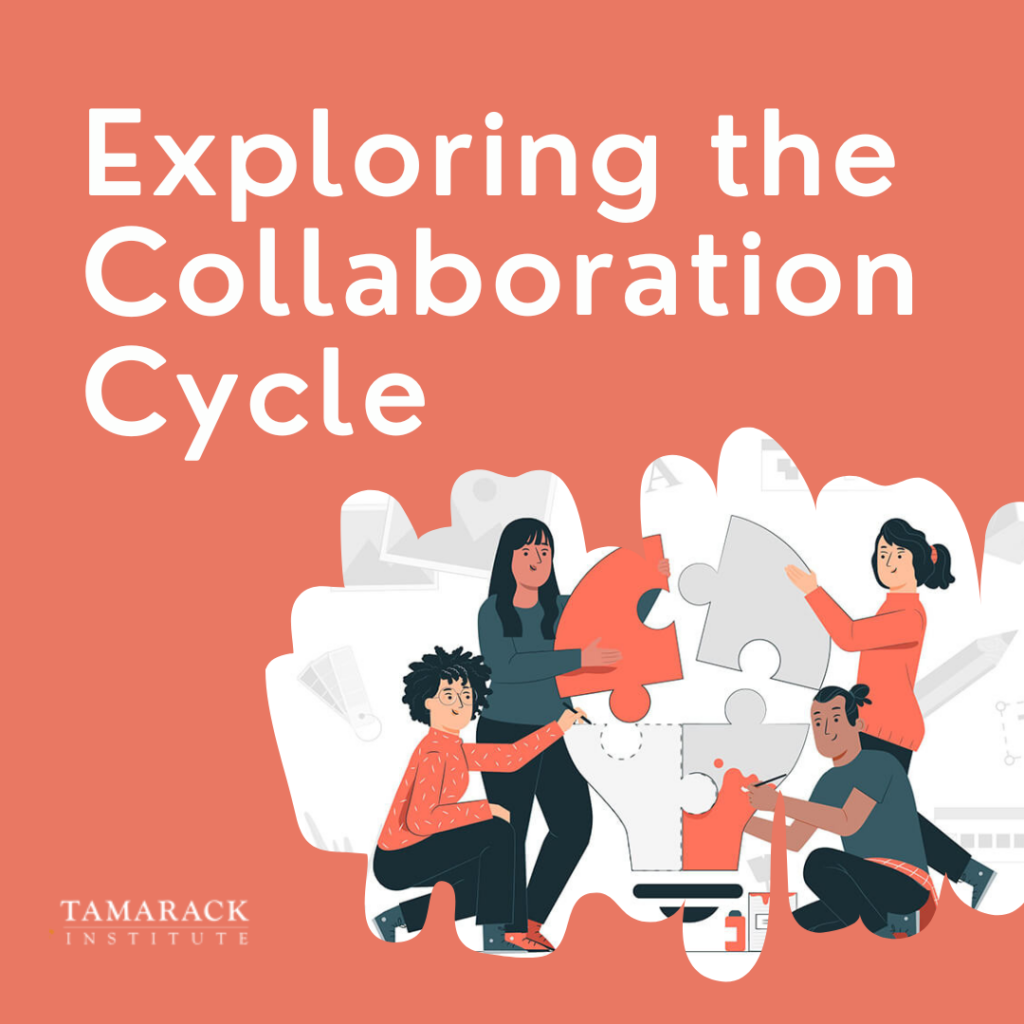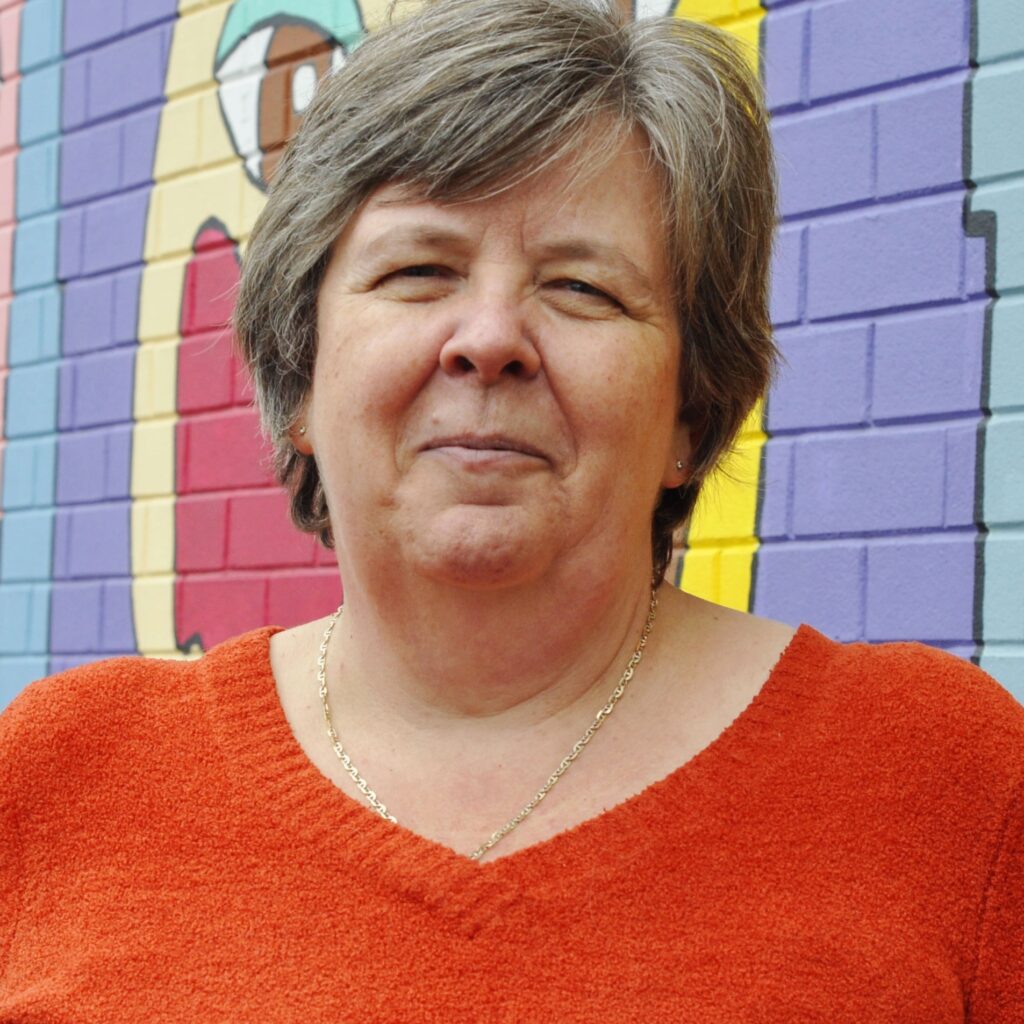Below is an excerpt from the full article which can be downloaded here or at the bottom of this post. This article a part of the Tamarack Institutes Collaborative Governance and Leadership series.
The Collaborative Context

Many enter into collaboration thinking that the shared work is a linear and flat process from start to end. One of the favourite images describing collaboration that is often included in Tamarack power points is this image of plan versus reality. It captures the reality of collaboration including the twists and turns that collaborative efforts face as they move from start to completion. It can include obstructions like boulders and choppy waters and other challenges which are found obstructing the path along the way. This image always receives a small chuckle because individuals in the room have experienced these challenges.
However, the reality image still conveys a relatively linear, if upward, and challenging experience. This image is relevant for collaborative efforts seeking to achieve a result that is more defined such as the exchange of ideas, or development of a new program or service.
For more significant community change efforts, a different approach was introduced to Tamarack by Brenda Zimmerman of The Plexus Institute. Zimmerman described community change as a more cyclical process mirroring phases of development found in ecology.
The ecocycle concept is used in biology and depicted as an infinity loop. In this case, the S curve of the business school life cycle model is complemented by a reverse S curve. It is the reverse S curve, shown below with the dotted line, that represents the death and conception of living systems. In our depiction of the model, we call these stages creative destruction and renewal. The importance of the infinity loop is that it shows there is no beginning or end. The stages are all connected to each other. Hence renewal and destruction are part of an ongoing process.

Being an infinity cycle, there is no obvious start or end to the cycle. Let us begin our examination of the stages at the beginning of the traditional S curve. We will begin each phase by using the biological example of a forest and then look at the analogous phase in human organizations.(i)
The four phases of the ecocycle, as described by Zimmerman and the Plexus Institute follow the traditional (and linear) growth curve from birth to maturity. However, it also considers a renewal loop. The renewal loop includes a creative destruction phase and a renewal phase.

The image from the Plexus Institute website displays and describes the ecological cycle of a forest which starts with a variety of different plant growth (birth) which leads to increasing density as the forest grows to maturity. At maturity, the forest becomes increasingly vulnerable because of the density of growth. It can experience rot through invasive moths or pests or be ruined because of a forest fire. The creative destruction phase creates the space for renewal and regrowth. It is often the results of decay that enable the regrowth or renewal to seed.
Using the Ecocycle to Inform Our Practice
The ecocycle has been adapted by many organizations over the last several years to describe a better way of understanding community change and collaboration cycles. Tamarack has used the ecocycle to inform our practice of supporting communities tackling complex issues like ending poverty, building youth futures, deepening community, and navigating climate transitions. Tamarack, influenced in our early years by Brenda Zimmerman, recognizes that communities are dynamic and responsive. Even as collaborative tables begin to intervene in community change efforts, the community begins to respond, grow, and change. The ecocycle approach can be useful to collaborative tables to help understand and navigate dynamic change recognizing that change is not linear but rather exists in phases and cycles.
From Ecocycle to Collaboration Cycle
There have been many articles written about the Ecocycle and adaptations to this approach. One useful adaptation of the ecocycle was developed by Chris Thompson, Collaboration – A Handbook from the Fund for our Economic Future. (ii) In this handbook, Thompson adapts the ecocycle to a collaboration cycle approach. Thompson builds of the Plexus Institute ecocycle framework and Tamarack’s approach to adapting the ecocycle to community change efforts. Thompson uses the phases language of development, maturity, creative destruction, and exploration.
Thompson describes three elements which are vital to impactful collaboration: capacity, process, and leadership. The collaboration cycle is useful to focus on the process of collaboration.
This cycle serves as a roadmap for the diverse players who are along for the collaboration journey. It is invaluable to new participants joining an existing collaboration, as it can be used to help them understand where the partners are on the journey. Advocates of collaborations, particularly those performing the key collaboration functions, also should take the time to help each partner assess where they are on the cycle. Not every partner travels through the cycle at the same pace. (Thompson. Page 29) Thompson provides useful steps in each of the phases such as developing new thinking, analyzing data, and expanding possibilities in the exploration phase

In the development phase, the steps include choosing strategies, developing approaches, and adapting as the collaboration moves forward. The maturity phase includes implementation, evaluation and in some cases conserving to build on successful results. The creative destruction phase is initiated by declining outcomes, crisis, or breakdown and reconnecting.

Access the full article HERE

Liz Weaver is the Co-CEO of Tamarack Institute and leading the Tamarack Learning Centre. The Tamarack Learning Centre advances community change efforts by focusing on five strategic areas including collective impact, collaborative leadership, community engagement, community innovation and evaluating community impact. Liz is well-known for her thought leadership on collective impact and is the author of several popular and academic papers on the topic. She is a co-catalyst partner with the Collective Impact Forum.
Liz is passionate about the power and potential of communities getting to impact on complex issues. Prior to her current role at Tamarack, Liz led the Vibrant Communities Canada team assisting place-based collaborative tables to move their work from idea to impact.
featured image found here

Network Weaver is dedicated to offering free content to all – in support of equity, justice and transformation for all.
We appreciate your support!
Related Posts
November 4, 2024
Receiving Love and Care: A Liberatory Practice
June 21, 2024



